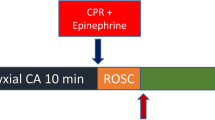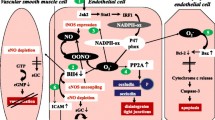Oxyradicals have been implicated in the pathophysiology of numerous diseases. This review describes the role of oxyradicals in cardiovascular depression and cellular injury during hemorrhagic shock and reinfusion. Clinical classification of shock has been provided. Physiological basis of signs and symptoms of hemorrhagic shock has been tabled. This review provides data that the cardiac function and contractility are depressed during shock and reinfusion. The cardiac depression is associated with increases in the lipid peroxidation product malodialdehyde (MDA), in the oxygen radical producing activity of polymorphonuclear leukocytes, and the activity of plasma creatine kinase and CKMB. Also the antioxidant reserve is depressed in the myocardium. Antioxidant enzyme activity is affected adversely. Pretreatment with antioxidants retards the cardiac depression and reduces oxidative stress. In this respect polymorphonuclear leukocytes play a role in the cardiac depression in hemorrhagic shock and reinfusion. The increase in the vascular resistance appears to be associated with oxidative stress. The data to-date suggest that oxyradicals play a role in the cardiac depression and cellular injury during hemorrhagic shock and reinfusion and that the antioxidant treatment may be beneficial in hemorrhagic shock and reinfusion.
Similar content being viewed by others
Author information
Authors and Affiliations
About this article
Cite this article
Prasad, K., Lee, P. Role of Oxyradicals in the Pathophysiology of Hemorrhagic Shock . International Journal of Angiology 11, 113–128 (2002). https://doi.org/10.1007/s00547-002-0937-3
Issue Date:
DOI: https://doi.org/10.1007/s00547-002-0937-3




